Introduction
Ice flowers, known in culinary circles as the ethereal, lacy crusts that adorn pan-fried delicacies, are a testament to the marriage of simplicity and elegance in cooking. These delicate, crispy edges, resembling frost patterns on a winter windowpane, elevate humble dishes into visual and textural marvels. Originating from traditional Chinese cooking techniques, ice flowers (or binghua in Mandarin) are most commonly associated with pan-fried dumplings, potstickers, and pancakes. Achieving this effect requires precision, patience, and an understanding of the science behind starch gelatinization and Maillard browning. This article delves into the nuances of creating ice flowers that are not only visually stunning but also irresistibly crunchy and flavorful. Whether you’re a home cook honing your skills or a culinary enthusiast exploring global techniques, mastering ice flowers will transform your dishes into edible works of art.
The Science Behind Ice Flowers
Before diving into recipes, it’s essential to grasp the chemistry that creates these lacy wonders. Ice flowers form when a thin starch-water mixture is poured into a hot, oiled pan. As the liquid heats, the starch granules absorb water, swell, and eventually rupture, releasing amylose and amylopectin molecules. These molecules cross-link, forming a gel-like network. Simultaneously, the water evaporates, leaving behind a delicate lattice of crispy starch. The Maillard reaction—a chemical process between amino acids and reducing sugars—adds depth and color, turning the starch network into a golden, flavorful crust.
Ingredients: The Foundation of Flavor
The beauty of ice flowers lies in their minimalist ingredient list, which allows each component to shine. Here’s what you’ll need:
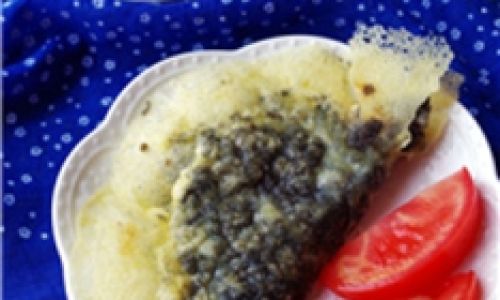
-
Starch: The star player. Common options include:
- All-purpose flour: Versatile and accessible, yielding a light, crisp texture.
- Rice flour: Produces a finer, more delicate lace.
- Cornstarch: Results in a brittle, translucent crust.
- Potato starch: Offers a neutral flavor and extra crunch.
-
Water: Use cold or room-temperature water to prevent lump formation.
-
Oil: A neutral oil with a high smoke point (e.g., vegetable, canola, or peanut oil) ensures even browning.
-
Seasonings (Optional): Salt, pepper, sesame seeds, or five-spice powder can add complexity.
-
Aromatics (Optional): Minced garlic, ginger, or scallions infuse the crust with fragrance.
Equipment Essentials
- Non-stick or cast-iron skillet: A must for even heat distribution and crisp results.
- Ladle: For precise pouring of the starch mixture.
- Spatula: Preferably a thin, flexible one for gentle release.
- Paper towels: To drain excess oil.
Step-by-Step Guide to Perfect Ice Flowers
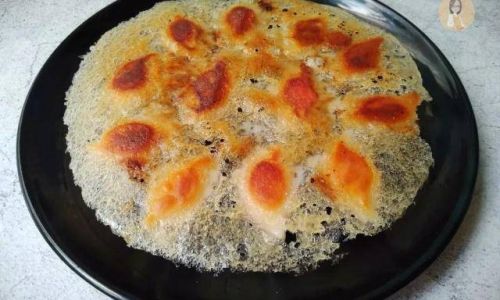
Preparing the Starch Slurry
The ratio of starch to water is critical. A 1:5 ratio (e.g., 1 tbsp starch to 5 tbsp water) creates a runny mixture that spreads evenly. For enhanced flavor, dissolve a pinch of salt or a dash of soy sauce in the water before adding the starch. Whisk vigorously to eliminate lumps.
Heating the Pan
Preheat the skillet over medium-high heat. Add 1–2 tbsp of oil, tilting the pan to coat the surface. Allow the oil to shimmer but not smoke. Overheating risks burning the starch, while insufficient heat prevents proper crisping.
Adding the Filling (If Applicable)
For dumplings or pancakes, arrange the filled items in the pan, leaving space between them. Sear until the bottoms are golden (2–3 minutes). This step ensures the filling cooks evenly while the ice flower forms.
Pouring the Slurry
Reduce the heat to medium. Carefully pour the starch mixture around the edges of the pan, using a ladle to distribute it evenly. Aim for a thin, consistent layer—too much slurry results in a thick, doughy crust, while too little yields sparse lace.
Cooking Technique
Cover the pan and let the mixture cook for 5–7 minutes. The steam generated helps cook the filling (if using) and sets the starch. Resist the urge to peek, as this releases steam and disrupts the process.
Unveiling the Ice Flowers
Once the slurry dries and turns translucent, remove the lid. Continue cooking uncovered until the edges curl and the crust turns golden brown (another 2–3 minutes). Listen for a sizzling sound—a sign that the water has evaporated.
Releasing the Crust
Gently slide a spatula under the ice flower to loosen it from the pan. For a dramatic presentation, invert the pan onto a plate to showcase the lacy pattern.
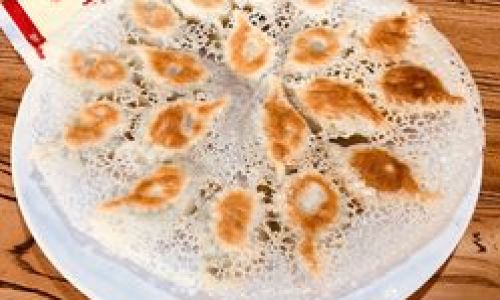
Troubleshooting Common Pitfalls
- Soggy Crust: Insufficient heat or too much slurry. Increase the temperature and reduce the liquid ratio.
- Uneven Browning: Uneven pan heating. Rotate the pan halfway through cooking.
- Burnt Edges: High heat or prolonged cooking. Lower the flame and monitor closely.
- Lack of Lace: Thick slurry or overcrowding the pan. Thin the mixture and ensure adequate space between items.
Flavor Variations and Creative Twists
Savory Infusions
- Spicy Kick: Add a pinch of red pepper flakes or Sichuan peppercorn to the slurry.
- Herbaceous Notes: Mix chopped cilantro, chives, or dill into the starch mixture.
- Umami Boost: Incorporate a teaspoon of mushroom powder or dried shrimp.
Sweet Adaptations
Ice flowers aren’t limited to savory dishes. For dessert pancakes or stuffed buns:
- Cinnamon-Sugar: Sprinkle the crust with a cinnamon-sugar mix post-cooking.
- Sesame-Honey: Drizzle honey and toasted sesame seeds over the crust.
- Cocoa Twist: Replace 10% of the starch with cocoa powder for a chocolatey lace.
Textural Contrasts
Pair ice flowers with soft, yielding fillings for sensory contrast:
- Dumplings: Stuff with pork and cabbage, or vegetarian mushroom mix.
- Pancakes: Layer with scrambled eggs, cheese, or smoked salmon.
- Desserts: Fill with red bean paste or Nutella.
Cultural Significance and Regional Adaptations
In northern China, ice flowers are synonymous with jianbing guozi, a street-food favorite featuring a crispy pancake wrapped around a deep-fried dough stick. The technique also graces shengjian bao, pan-fried soup dumplings with a signature lacy base. In Korean cuisine, similar lacy edges (called nurungji) appear on dolsot bibimbap, while Vietnamese bánh xèo (sizzling pancakes) utilize a rice-flour batter for a fragile, golden crust.
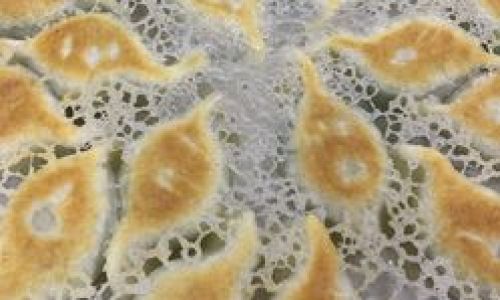
Serving Suggestions and Pairings
- Dipping Sauces: Elevate the crust with soy-vinegar dip, chili oil, or a creamy avocado sauce.
- Accompaniments: Serve alongside pickled vegetables, kimchi, or a fresh cucumber salad.
- Beverage Pairings: Match the dish’s regional roots—tea for Chinese preparations, sake for Japanese-inspired plates, or a crisp lager for Korean-style fare.
Advanced Techniques for the Ambitious Cook
Double-Crust Method
For extra crunch, apply two layers of slurry. Cook the first layer until set, add a second pour, and finish cooking.
Colored Ice Flowers
Infuse the slurry with natural dyes:
- Beetroot: For a pink hue.
- Spinach: For a vibrant green.
- Turmeric: For golden lace.
Edible Flowers as Garnish
Place delicate, food-safe blooms (e.g., pansies, nasturtiums) in the pan before pouring the slurry. The flowers fuse into the crust, creating a botanical masterpiece.
Preserving and Reheating Tips
Ice flowers are best enjoyed immediately, as they lose crispness over time. To reheat:
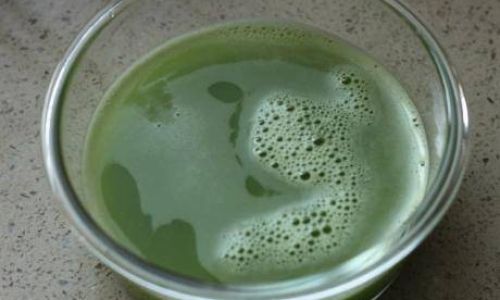
- Oven: Place on a wire rack in a 375°F (190°C) oven for 5 minutes.
- Stovetop: Re-crisp in a dry pan over medium heat.
Avoid microwaving, as it softens the texture.
Conclusion: The Alchemy of Simplicity
Ice flowers epitomize the magic of humble ingredients transformed by technique and attention to detail. They remind us that culinary excellence need not rely on complexity—sometimes, a starch, water, and heat are all you need to create something extraordinary. Whether you’re a novice or a seasoned cook, experimenting with ice flowers invites creativity, patience, and a deeper appreciation for the interplay of science and art in the kitchen. So, fire up your pan, whisk your slurry, and let the delicate lace of ice flowers become your signature touch.
Final Word: Don’t fear failure. The first few attempts may yield imperfect lace, but each trial hones your intuition. Embrace the process, savor the crunch, and let your ice flowers bloom.
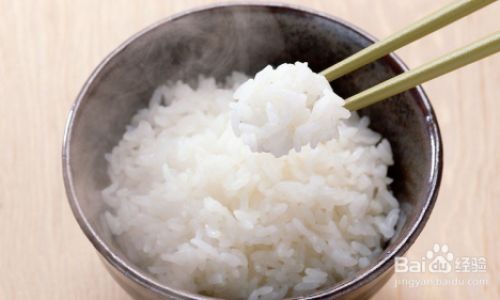
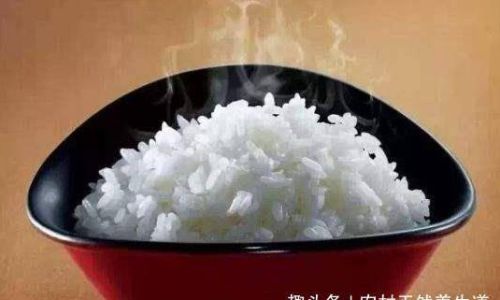
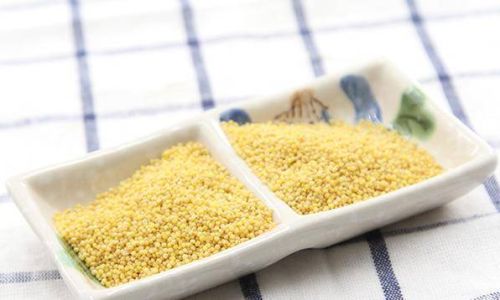

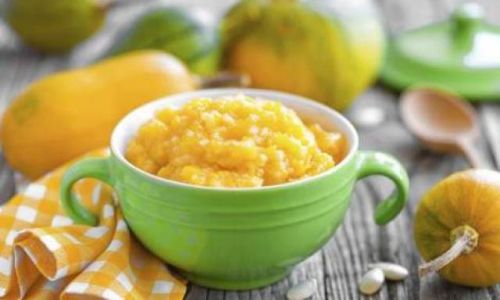
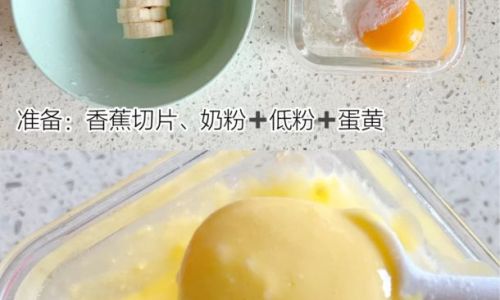
0 comments